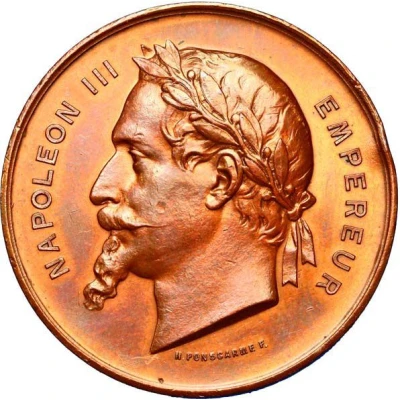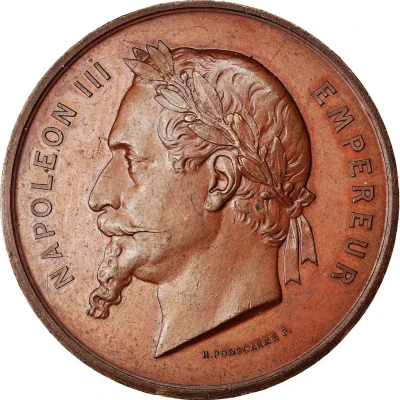


© CGB
Medal - Napoleon III Exposition Universelle Paris
1867 year| Copper | 22.3 g | 37 mm |
| Location | France |
|---|---|
| Emperor | Napoleon III (Napoléon III) (1852-1870) |
| Type | Commemorative medals › Exhibition, fair and festival medals |
| Year | 1867 |
| Composition | Copper |
| Weight | 22.3 g |
| Diameter | 37 mm |
| Thickness | 2 mm |
| Shape | Round |
| Technique | Milled |
| Orientation | Medal alignment ↑↑ |
| Updated | 2024-11-12 |
| Numista | N#199489 |
|---|---|
| Rarity index | 91% |
Reverse
Victory with naked breasts flying above the globe and holding the plan of the Mars field
Lettering:
EXPOSITION · UNIVERSELLE · DE · MDCCCLXVII · À · PARIS
H. PONSCARME
Engraver: Hubert Ponscarme
Edge
Heald and bee punch
Script: Latin
Lettering: CUIVRE
Comment
Universal exhibitions were created to showcase the industrial achievements of different nations. They represented the technological and industrial showcase of the participants, testifying to progress during the Industrial Revolution. The first World's Fair was held in London in 1851.Originally, each country had its own space in a central pavilion. National pavilions were introduced in 1867. In principle, they were allocated only if there was something to present that the central pavilion could not accommodate. They soon became widespread, with exhibiting nations building pavilions typical of their country's architecture.
Competition was ubiquitous at world's fairs, and medals and prestige were awarded to the most deserving.
Numerous architectural achievements built for world's fairs went on to become symbols of the cities that hosted them: the Eiffel Tower in Paris, the Atomium in Brussels, the Space Needle in Seattle, the Biosphere in Montreal.
Last but not least, the holding of world's fairs has always been an opportunity to set up urban planning projects: construction of the Paris metro in 1900 or the Montreal metro in 1967, extension of the Lisbon metro in 1998...
See http://fr.wikipedia.org/wiki/Exposition_universe lle.
Source : CGB



